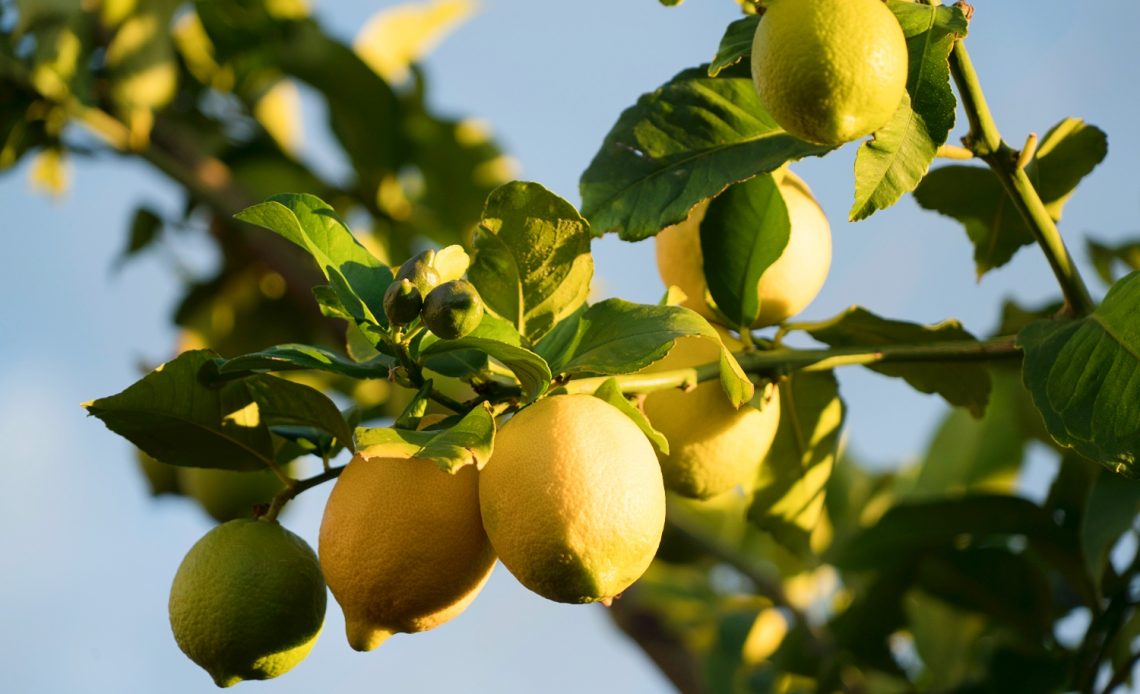

We’re here to help! Wild Yards is a completely free website that is 100% dedicated to helping you create a wildlife-friendly, sustainable yard. Read more
WildYards is reader-supported. When you buy a product through a link on our site, we may earn a comission. Every product is independently selected by our (obsessive) editors and our reviews are unbiased and objective. Read more about our mission or our privacy policy.
Lemons are some of the easiest fruit trees to grow. Whether you have a large backyard with plenty of room or only a small patio garden, lemon trees can provide you with dozens of homegrown fruits year after year. Overall, these plants require very little care. Just make sure they get enough sunlight and water, and they should grow fine. Thanks to their easy-going nature, it’s not hard to see why lemons are so popular these days. In fact, humans have been growing lemons for thousands of years. But where did lemons come from? Are they natural fruit, or are lemons man-made?
Lemons were first cultivated by humans in East Asia roughly 4,000 years ago, and are a cross between the bitter orange and the citron. There are more than 50 types of lemons available today and they are prized for both their culinary and medicinal qualities.
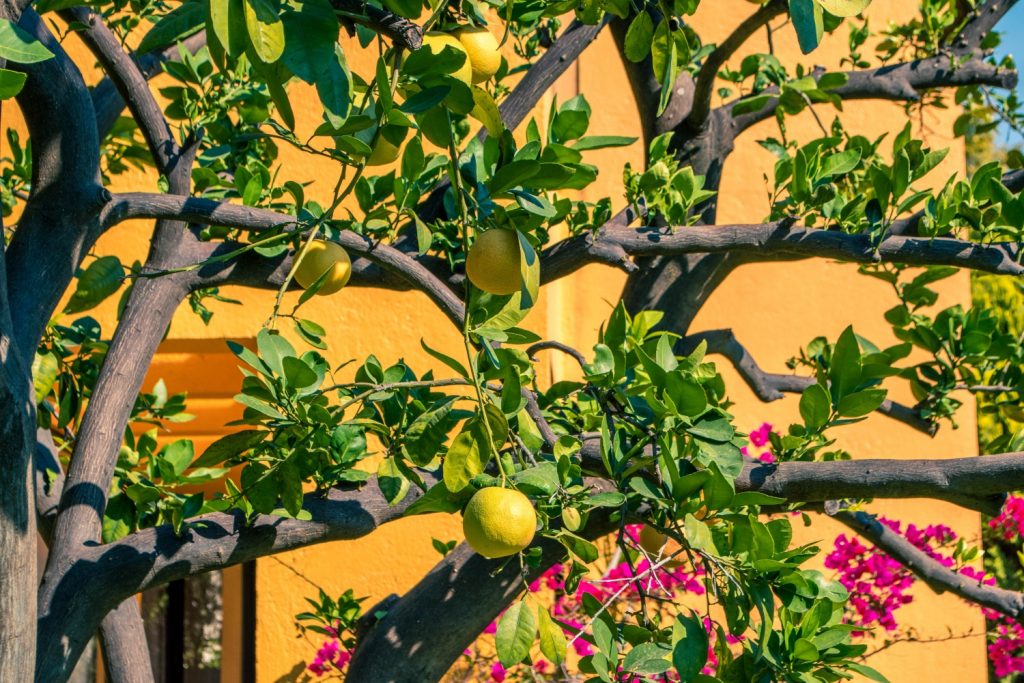
Are lemons man-made or did they first appear in nature?
According to DNA evidence, scientists have traced all citrus fruits to the southeast foothills of the Himalayas. It’s believed that the very first citrus trees originated in this region nearly 8 million years ago, and, through years of natural evolution and human intervention, have been cultivated into the many delicious citrus fruits we enjoy today.
The lemon was first developed around 4,000 years ago when farmers crossed the bitter orange with the citron. Several varieties of bitter orange still exist. These fruits have a sour, tart taste that makes them a poor choice for snacking. So they’re commonly used to make marmalade, instead. Citrons are also still available and have a much milder flavor that makes them ideal for baking and making candied fruits.
Compared to its two progenitors, the lemon has a tangy taste that is undeniably sour, but less bitter. The lemon has a more potent flavor profile than the citron, but it’s also more palatable than the bitter orange. Additionally, although lemons are smaller than both bitter oranges and citrons, they have thinner skins and contain more juice, which makes them a more popular culinary choice.
After the lemon was first cultivated, it slowly made its way through the Middle East and North Africa, then spread throughout the Mediterranean region. By 1000 A.D., lemons had been introduced to Spain. In 1493, Christopher Columbus brought the first lemon seeds to the New World, and in the mid-1700s, lemons could be found growing in California. It wasn’t until the 1800s that lemons were grown in Florida, but lemon trees continue to thrive in the state’s warm, humid climate today.
What were lemons used for?
Initially, lemon trees were grown for their appearance, much like ornamental peppers are today. But by the 10th century, people began to notice the health benefits that lemons had to offer. And, soon, the fruits were cultivated for their culinary and medicinal uses as well.
Most significantly, lemons were grown to help sailors avoid getting scurvy during their long voyages. For decades, scurvy baffled medical experts, who failed to understand the underlying cause of the disease. After months at sea, many sailors developed agonizing symptoms. Aching joints, bruising, bleeding gums, and wounds that wouldn’t heal. As the disease progressed, scurvy victims became lethargic and lost their hair and teeth. It’s estimated that 2 million sailors lost their lives to scurvy between 1500 and 1800.
It wasn’t until 1747 that a Scottish physician named James Lind discovered that lemons and oranges could prevent scurvy. After dividing sailors into control groups and giving them vinegar, seawater, and citrus fruits, Lind discovered that the symptoms of scurvy could be attributed to a dietary deficiency. Soon afterward, ships began carrying stores of lemons to help ward off the once-fatal disease.
Of course, now we know that scurvy is actually a vitamin C deficiency, and the reason lemons are so effective at preventing it is that they contain high levels of this important nutrient. But lemons were also used to treat digestive ailments, including bloating, nausea, and constipation. Lemon juice was even used to clean open wounds to prevent infections — ouch!
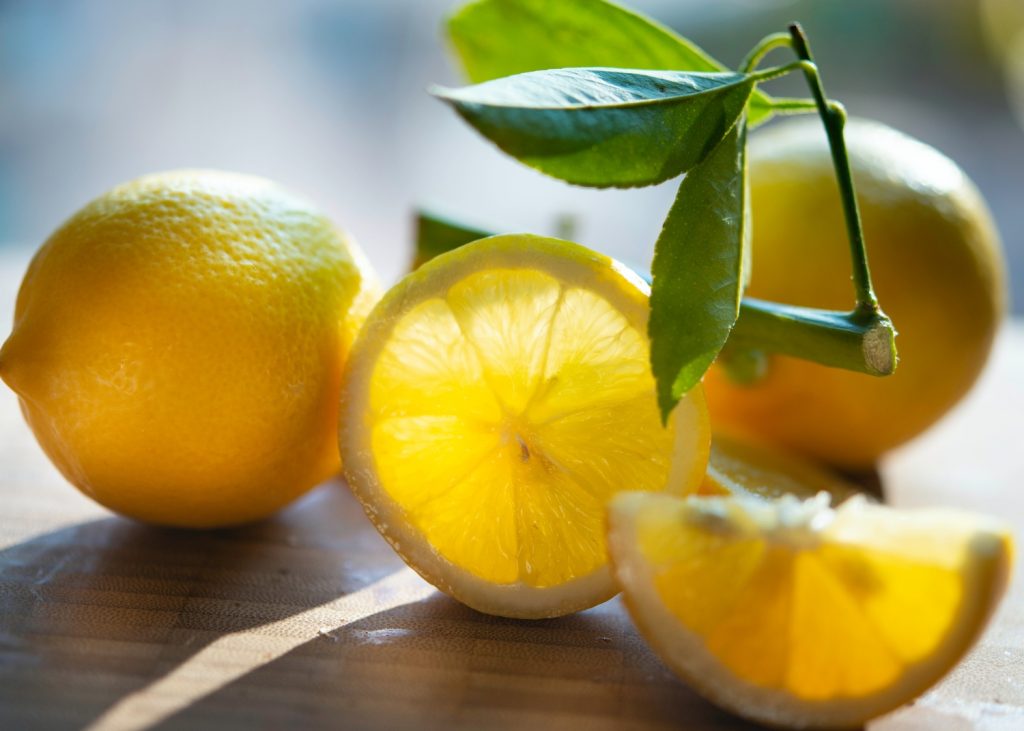
Which country produces the most lemons?
As it turns out, lemons are a big business. The global lemon market is worth an estimated $3.2 million!
As of 2020, India is the greatest producer of lemons, growing 3.7 million tons of lemons, which accounts for roughly 16% of the world’s production. Brazil, Spain, Turkey, and Mexico are also among the world’s major lemon producers.
Although the United States is not considered a major lemon producer, it still produces a significant amount of lemons. In 2020, the United States grew approximately 884,000 metric tons of lemons, with California alone being responsible for most of them. Arizona and Texas growers also contributed to the total.
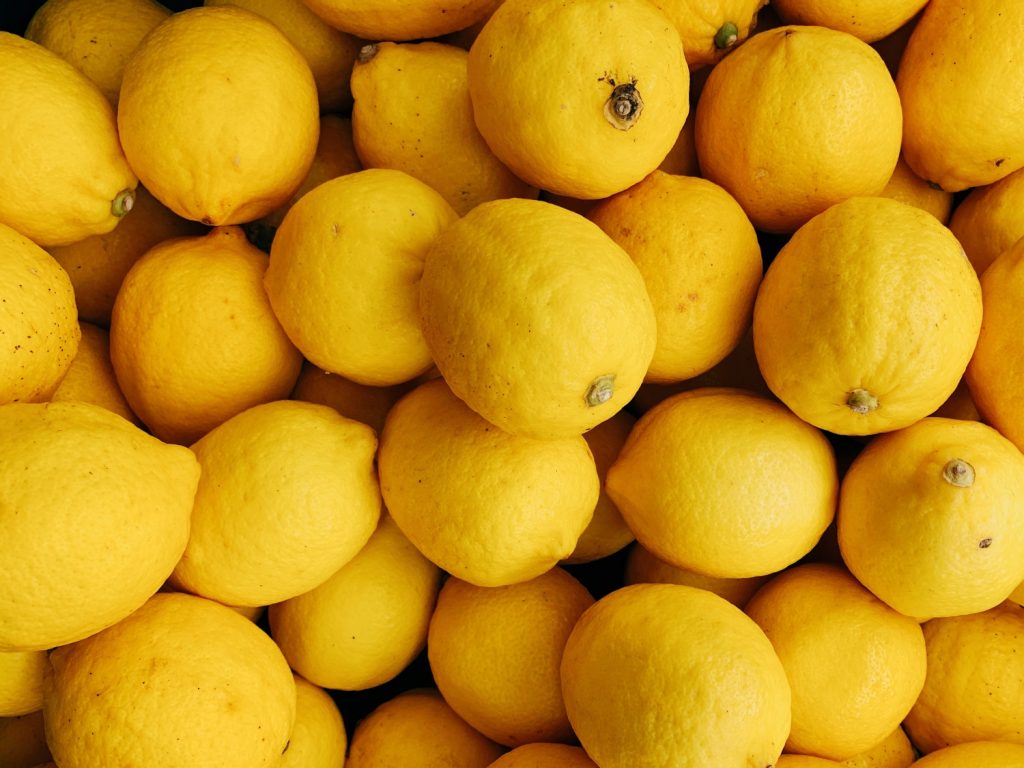
How many different types of lemons are there?
If you think it’s strange that lemons are man-made, you’ll probably be surprised to learn that cauliflower, broccoli, and carrots are man-made as well. Humans have been hybridizing different fruits and vegetables for centuries to make them more palatable, and to increase their disease and pest resistance.
There are over 50 varieties of lemons in the United States today, from the sweet ‘Eureka’ to the sour ‘Ponderosa’, lemons have only grown in popularity in the Western world since they were first introduced to it so long ago. Yet, in spite of the fact that there are more types of lemons to choose from now than ever before, these plants still have fairly strict growing requirements.
Regardless of variety, most lemon trees need full sun, humid air, and loamy, well-draining soil to grow well. Lemon trees prefer soil that is neutral to slightly acidic, with a pH of 5.5 to 7.0. Plants growing in soils that are too acidic or too alkaline will show stunted growth and develop curling leaves. These trees also require regular rainfall and can be difficult to grow in drier climates without dedicated care.
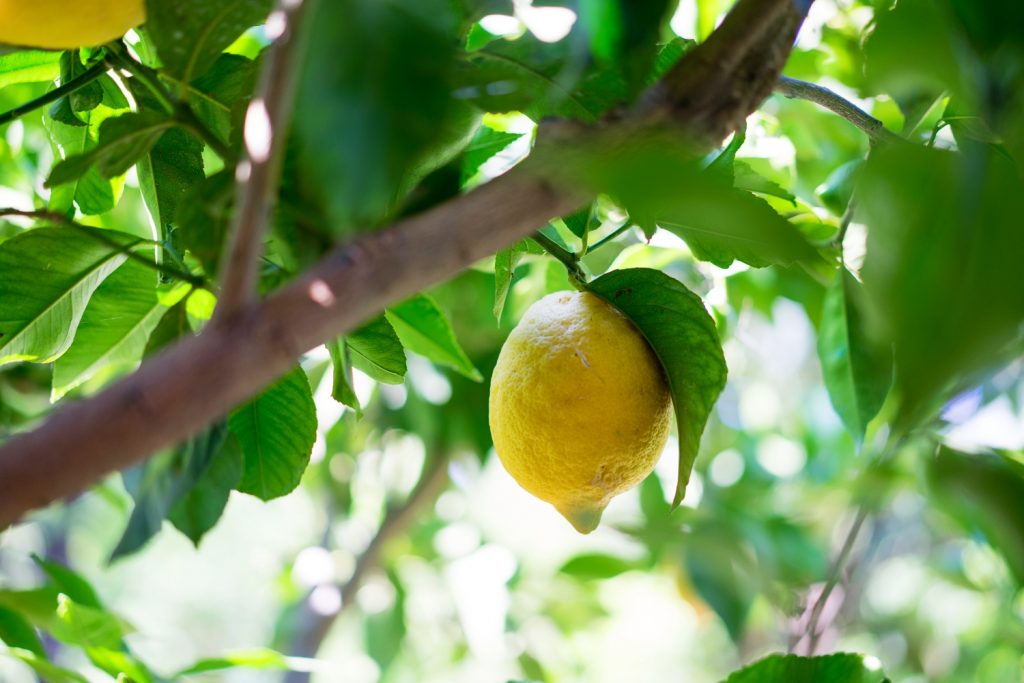
Are lemons genetically modified organisms (GMOs)?
Are lemons man-made? Yes. And, technically speaking, that means lemons are also genetically modified organisms. These plants have been carefully selected over centuries of hybridization to produce fruits with desired qualities. However, lemons are not genetically modified organisms in the sense that they have not had their DNA modified or engineered in a lab.
There are no truly genetically modified lemons in the United States. Traditional breeding methods, including grafting and cross-pollination, naturally result in DNA changes over time. But lemons are not mutant fruits that have had their DNA altered by scientists.
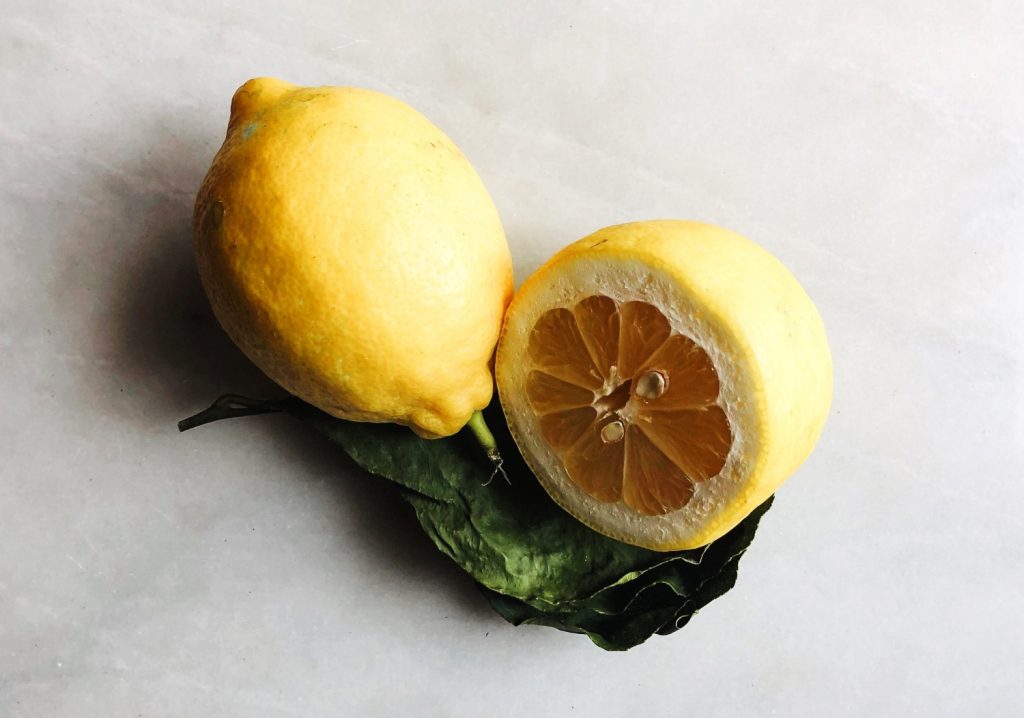
If lemons are man-made, are they still good for you?
Lemons probably wouldn’t exist if humans hadn’t cultivated them. But if lemons are man-made, does that mean they aren’t as nutritionally dense as fruits that are found in nature?
Even though lemons are man-made, they’re still highly nutritious. A single lemon contains about 50 milligrams of vitamin C, which is roughly half of the daily recommended dose. Vitamin C is essential for healthy skin and joints since it plays an integral role in collagen synthesis. Its high vitamin C content means lemons can help boost the immune system, too.
Lemons are also an excellent source of carotenoids. These plant pigments give lemons their vivid yellow color. The deeper the lemon’s color, the more of these pigments they have. Carotenoids show potent antioxidant activity, which makes lemons a superfood ideal for lowering cholesterol and reducing the risk of cancer.
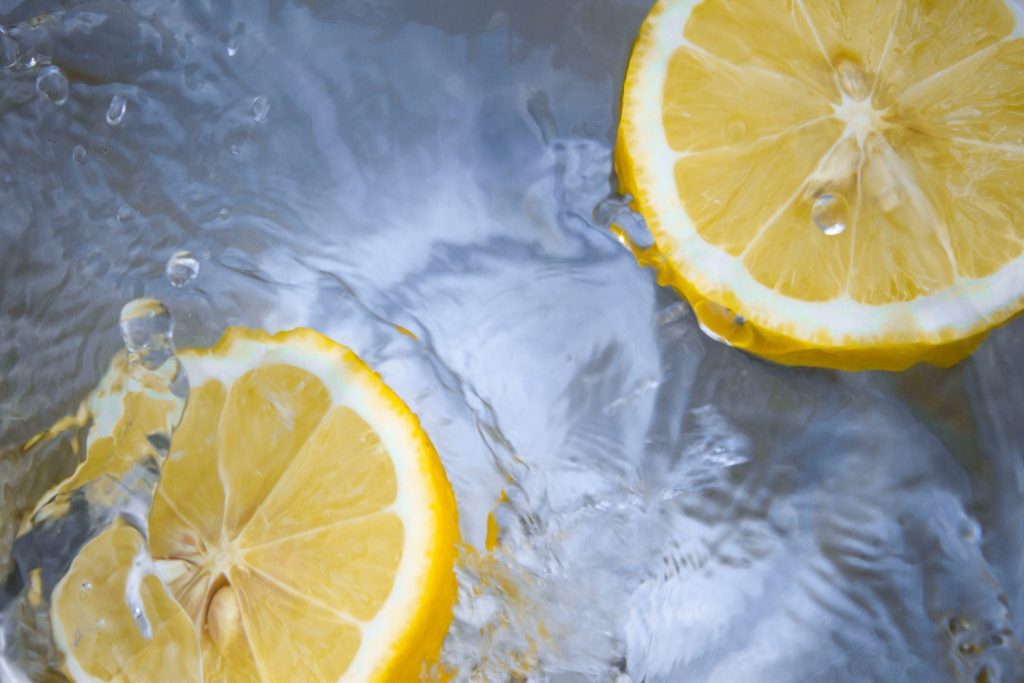
Are homegrown lemons better than store-bought lemons?
Store-bought lemons are mass-produced. Most of us have come to believe that things that are mass-produced are of lower quality. But because lemons are mass-produced, that means they’re subject to strict quality-control standards. Additionally, because the lemons you purchase from the grocery store come from experienced farmers, you can be certain that the trees they were picked from were grown in optimal conditions.
That said, it’s still possible to grow healthy lemons in your own backyard. Homegrown lemons are fresher than store-bought ones since you can eat them right off of the tree. And, depending on how well you fertilize the plants, homegrown lemons can be incredibly nutritionally dense — not to mention flavorful!
Growing good lemons starts with meeting the plant’s basic growing requirements. Full sun and moist yet well-draining soil are critical. But fertilizing the plants regularly is also important. If your lemon trees don’t get enough plant food, they won’t be able to make any fruits. So be sure to keep the plants on a strict fertilizing schedule.
Young trees should be fed with a citrus-specific fertilizer every 2 to 3 months during the first 2 to 4 years. Mature trees also need to be fed with a citrus-specific fertilizer, but not as often. Typically, older trees produce well when fed twice a year — once in the spring and again in the late summer months after the harvest.
Is growing lemons worth it?
Because lemons are so low-maintenance, and because they are prolific producers, they’re some of the most rewarding plants to grow. Even though lemons are man-made, they have many health benefits to offer and are an easy way for new gardeners to gain experience growing fruit trees.
